Read an excerpt | Meet the author | Testimonials/Review | News & Links | Blog | Contact
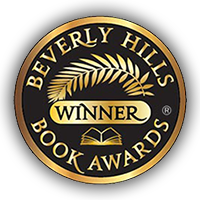
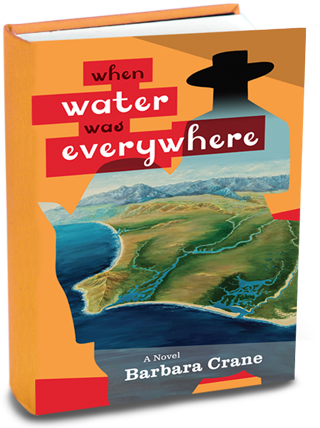 |
American immigrants, Mexican Californios, Tongva/Gabrieleno Indians and Spanish padres come to life in Barbara Crane’s imaginative re-telling of California’s Mexican era, set in what is now Long Beach and in the pueblo of Los Angeles. As the novel unfolds, its themes of loss, hope and redemption resonate from every page. |
| Part of the joy of a good book is letting your imagination create the backdrop to the story you are reading. Injecting reality into this process should be done with great caution.
Having said that, I want you to meet and get to know the main characters in this novel without having to spend too much time thinking about what existed beneath the cement and the rebar that cover much of California’s landscape today. So, I offer you the following photographs to help you place the characters in their natural setting. |
| Hover over image to enlarge | |
| The Los Angeles River | |
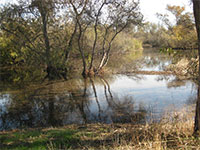 
< | The wild, willow-shored Los Angeles River, or Río de Porciúncula, as it was then known. This photo shows how the river might have looked in the 1840s when the whole area abounded with streams, rivers and wetlands. |
| Rancho Los Cerritos | |
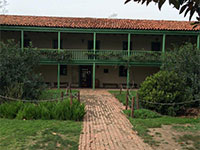 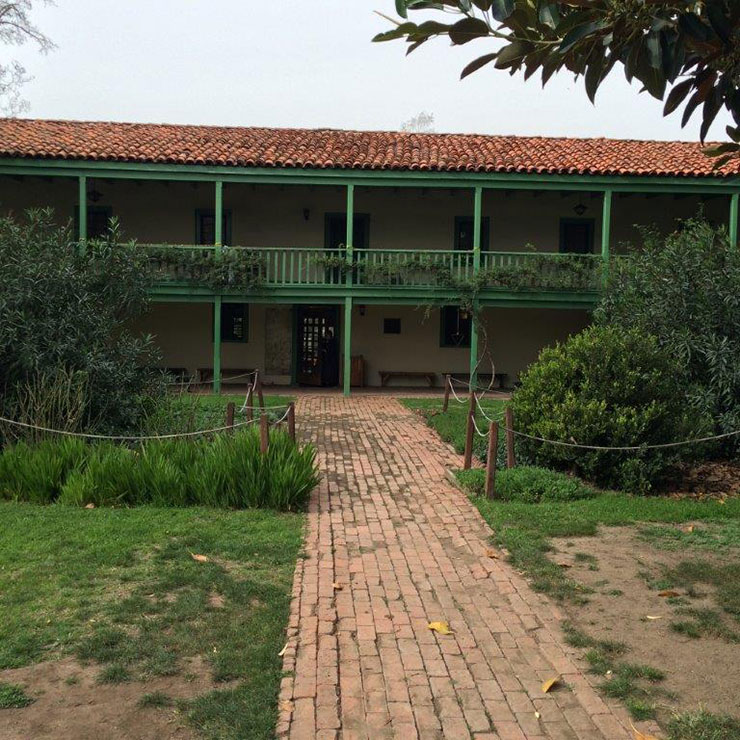 |
The rancho, in what is now Long Beach, California, plays a central role in the novel. It was built to serve as headquarters for the ranch and as a home for the ranch owner and his invited guests. Rancho Los Cerritos has been preserved; you can visit it today. |
| Big-Headed Girl’s Village | |
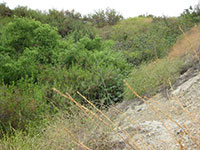 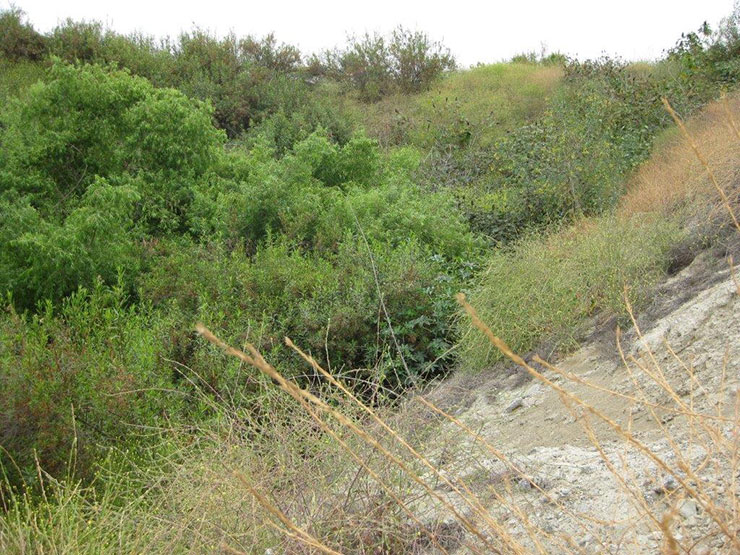 |
An Indian village not far from the river is home to an important character, Big-Headed Girl. A creek, barely visible through the thick willows in the lower center of the picture, runs along Big-Headed Girl's village. After her time, the spring that fed this creek became the city of Long Beach's first water supply. Today, the land is degraded by oil operations, but Willow Springs Park recently opened along its eastern edge. |
| Drawing of the Mission San Gabriel | |
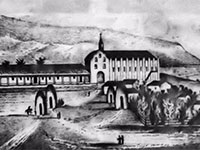  |
Here is a 19th century drawing which depicts the Mission, the setting for the last third of the novel. In the background, you see the San Gabriel Mountains. In the right foreground, you can see a small portion of the mission's extensive agricultural fields. The long barracks, on the left, housed the Indians who worked at the mission. |
| Click on the name of the character to meet them. Twenty years before the Civil War, only fifteen hundred souls inhabit Los Angeles, a tiny Mexican pueblo situated on a river bank. The vibrant Los Angeles River runs free and the land around it is a marsh, not a desert. This world of rivers and wetlands is already vanishing when the American immigrant Henry Scott arrives in the Pueblo of Los Angeles in 1843 during the waning days of Mexican rule. Having escaped an abusive father and a life of poverty, he is desperate for a new start. In a stroke of luck, he meets the successful merchant Don Rodrigo Tilman, whose money, determination and arrogance will help change life in California forever. Tilman eventually makes Scott the foreman of his multi-acre ranch, twenty miles south of the pueblo along the Los Angeles River. |
In a village nearby, Big Headed Girl, a Tongva Indian, suffers the deaths of her family members and watches her tribal way of life disappear. Forced to feed herself and her children, she leaves to work at the ranch, where she encounters Henry Scott and ignites his hope of marrying her. Padre José, the Franciscan friar in charge of the Mission San Gabriel, is haunted by the memories of his father and brothers, murdered by soldiers in his native Spain. He is spiritually dead until a miracle brings him to faith at the end of the novel. The novel’s dramatic conclusion, when all converge on Tilman’s ranch, will leave you with an altered view of a California that lives on beneath today’s concrete and rebar. |
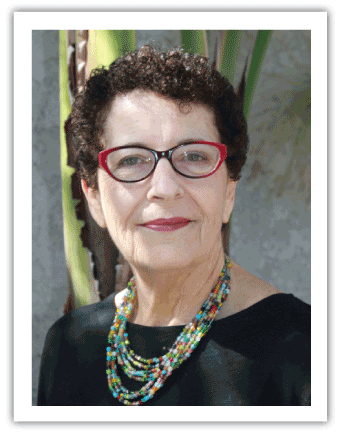 |
The novel When Water Was Everywhere emerged from days of crisscrossing the Los Angeles Basin by automobile—sometimes putting 15,000 to 20,000 miles a year on my car in the course of my work as an independent writer and corporate trainer. As I crossed overpasses high above the land, I often turned north toward the soaring transverse range. Known in our time as the San Gabriel Mountains, they ring the Los Angeles Basin. I wondered, “What did the first people on this land think about living in the shadow of these magnificent mountains?” I crossed over the Los Angeles River, saw it encased in its concrete channel, and wondered what the river looked like when it ran free. I drove along the coast and imagined the ships full of adventurers, explorers and holy men who came to California as early as the 16th century, changing the landscape, people and culture forever. All these wanderings coalesced into the novel When Water Was Everywhere. I graduated from UC Berkeley with a major in history and a minor in English. Given that education, I suppose it’s natural that both of my novels and nearly all my short stories have required historical research—in the case of “Water,” years of it. But I can’t confine my imagination to the bare facts. Characters are born into existence who live the history I’ve read. Other Books by Barbara | Buy Now |
| When Water Was Everywhere is a finely-crafted historical novel in which landscape functions not as background, but as a potent force which both shapes and is shaped by those who occupy the lands that we now know as southern California. Crane's broad canvas shows Anglos, indigenous peoples, and Spanish settlers in conflict and sometimes in concord during the era of colonization; it is a tribute to her artistry that while she does not turn away from the horrors of this era, she brings deep empathy to all her characters. Anne Finger, author of Call Me Ahab, Winner of the Prairie Schooner Prize for Fiction Set in California in the early days of El Pueblo de Nuestra Senora la Reina de Los Angeles, and where Rancho Los Cerritos still sits today as a museum, this tale brings to life compelling, and believable characters living and struggling to find their place in the melding of cultures of this time. Barbara Crane has skillfully woven the often conflicting interests of these characters in such a way that it will give the reader a fascination for a period of California history that most of us have forgotten. Landes Bell, Past President of the Board of Friends of Rancho Los Cerritos |
This is a novel of Los Angeles set in the 1840s, when it was a village. Throughout the story, the waters run with little interruption, as three cultures meet in conflict and occasional harmony. The characters, Anglo, Mexican/Spanish and Indian, move within and outside their spheres in widening circles, subject to the land in which they seek to survive and prosper. Here is the Los Angeles basin before the American conquest, a portrait of the land and the people painted in brilliant colors. The author has taken great pains to depict the lives touched by this clash of cultures, showing the emotions, environment and manmade objects woven carefully and accurately into a tense and very readable novel. When Water Was Everywhere provides rare insight for readers who want to understand the growing pains of the pueblo, village and rancho. Steve Iverson, Historical Curator, Rancho Los Cerritos Historic Site, Long Beach (ret.) An excerpt from When Water Was Everywhere won the grand prize in an Outrider Press anthology. Crane’s smoothly written prose effectively established the physical as well as emotional mood and location, engaging the reader’s attention and setting the stage for action. In every way, not only did her excerpt pass the ‘first page test’ by grabbing audience attention from the beginning, her piece sustains interest throughout via Crane’s accomplished technical skills and beautifully nuanced expressions of emotion. Whitney Scott, Publisher & Editor, Outrider Press |
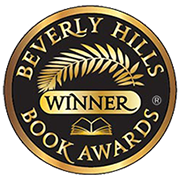 |
When Water Was Everywhere wins the 5th Annual Beverly Hills International Book Awards in the Historical Fiction category. |
2021
Barbara presented a Zoom talk When Water Was Everywhere: A Novel View of Early California to an enthusiastic online audience on January 27, 2021. The talk was part of a local history series for the Miller Special Collections Room at the Long Beach Public Library.
2020
During the pandemic, Barbara answered questions about When Water Was
Everywhere for a book group in Orange County, California, one of a number of
book groups that asked Barbara to participate in their discussion of her novel.
2019
Barbara was the featured speaker for the Friends of the Long Beach Public Library annual luncheon on May 18, 2019. Her topic was Long Beach: The Land and River in Fiction and Photographs.
Barbara gave a PowerPoint presentation of scenes and readings from When
Water Was Everywhere at the Long Beach Public Library, El Dorado branch.
2017
In a Lunch 'n Learn presentation to Mayor Garcetti's LA RiverWorks office in
the Los Angeles City Hall, Barbara introduced When Water Was Everywhere to the
staff. Working toward a new vision of the Los Angeles River, they were
interested to hear about the city's abundant water supply less than 200 years
ago.
Water in California's Early Days highlighted the story of the area's natural
history embedded in When Water Was Everywhere, in a PowerPoint presentation
for the Friends of the Los Alamitos-Rossmoor Library.
For board members of Rancho Los Cerritos, Barbara presented A Moment in Time:
Water in California's Early Days. Actor Garrett M. Brown read sections from
When Water Was Everywhere.
Ninety enthusiastic volunteers from the Rancho Los Alamitos Volunteer Council
enjoyed Barbara's PowerPoint presentation at their monthly meeting.
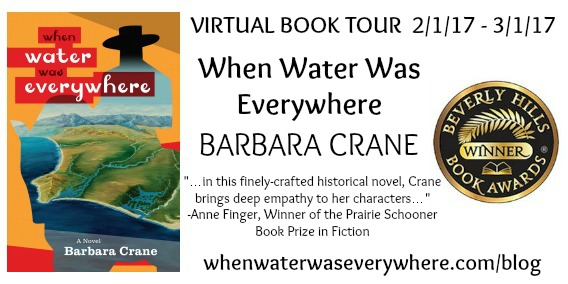
February 1-14: GoodReads – Signed paperback giveaway
www.goodreads.com/giveaway/show/217734-when-water-was-everywhere
February 2-3: The Senior Voice – Reviewed by Barbara Glass
www.theseniorvoice.com
February 3: Big Blend Radio / Toast of the Arts -- Podcast with Lisa Smith
www.blogtalkradio.com/big-blend-radio
February 6: Amazon
amzn.to/2jnRtJq
February 6: Goodreads
bit.ly/2jnUREg
February 7: Western Americana - Guest post
westernamericana2.blogspot.com
February 8: The Next Best Book Club / Where Writers Write – Photo Essay
thenextbestbookblog.blogspot.com
February 9: Book Daily - Excerpt
www.bookdaily.com
February 10 Women on Writing Blog / Friday Speak Out – Essay
muffin.wow-womenonwriting.com
February 11: Free Book Friday – Interview
www.facebook.com/freebookfriday
February 11-17: Free Book Friday – Giveaway
www.facebook.com/freebookfriday
February 1-14: True Book Addict – Q & A
www.truebookaddict.com
February 15: True Book Addict – Signed paperback giveaway
www.truebookaddict.com
February 15-28: Library Thing – Ebook giveaway
www.librarything.com/work/19127666
February 22: Fresh Fiction Blog - Guest Post and Giveaway
http://freshfiction.com/book.php?id=89062
February 23: Thoughts in Progress – Guest Post
masoncanyon.blogspot.com/2017/02/californias-mission-phase-inspires-novel.html
March 1: Big Blend Magazine – Ezine article
blendradioandtv.com/index.php/big-blend-magazines
2016
Barbara is guest speaker of the Book Club at Gatsby Books on Saturday, November 5, 2016. She discusses When Water Was Everywhere.
Barbara Crane reads from When Water Was Everywhere on the Los Angeles River. Friends of the Los Angeles River (www.folar.org) have invited Barbara to read from her historical novel, which is set on the Los Angeles River. Where: the Frog Spot: The LA River Bike Path, 2815 Benedict St., Los Angeles, 90039. Time: 3 p.m. A FoLAR representative will be on hand to answer questions about the river and to guide a short river walk.
On September 8 at 6 p.m., Barbara reads from When Water Was Everywhere at the Long Beach Public Library, Bay Shore branch located at 195 Bay Shore Avenue, Long Beach, CA 90803.
If you live in the Long Beach/Los Angeles area, please join us for Barbara Crane’s book signing at Gatsby Books on Sunday, June 26, 2016 at 3 pm. Gatsby Books is located at 5535 E. Spring Street, Long Beach, CA 90808.
Barbara presents her book to the members of the Long Beach Water Department, Water Board, on June 16, 2016.
Lagoon House Press
introduces their premiere publication at the Press Launch on Saturday, May 14, 2016. When Water Was Everywhere, a new novel by Long Beach, California author Barbara Crane, will be available June 1st on amazon.com and barnesandnoble.com and other outlets soon.
If you enjoyed reading When Water Was Everywhere, there are a number of other websites that will give you more insight into the people, the time and the place. Here are a few of my favorites:
Friends of the Los Angeles River: www.folar.org
Dedicated to protecting and restoring the Los Angeles River.
Heyday Books: www.heydaybooks.com/about
Independent, non-profit press. Publishes many books by and about California Indians.
Rancho Los Cerritos: www.rancholoscerritos.org and Rancho Los Alamitos: www.rancholosalamitos.com
Long Beach, California is fortunate in having two historic ranchos, both exceptionally well-maintained. Both are sources of local history and offer provocative lectures and activities.
Aquarium of the Pacific: www.aquariumofpacific.org
Another Long Beach attraction, the aquarium abounds with learning experiences. Its lecture schedule and weekend activities are first rate.
Long Beach Museum of Art: www.lbma.org
Museum of Latin American Art: www.molaa.com
Los Angeles County Museum of Art: www.lacma.org Many images in my writing are inspired by visits to these art museums.
Natural History Museum of Los Angeles County: www.nhm.org
The 100-year-old museum has been newly updated and features a variety of gardens. The museum calls the gardens “the city’s new backyard."
Malki Museum: www.malkimuseum.org
California’s first museum founded by Native Americans. Also home to Malki-Ballena Press.
Survival International: www.survivalinternational.org
Defends tribal peoples around the world.
Human Origins: www.humanorigins.si.edu
The Smithsonian Museum’s link to research into human origins. Web search “origins of early humans” for other fascinating links.
|
After my blog was hacked three times, the last time so profoundly that my website was destroyed, I gave up on blogging. Before that, however, I wrote a number of blogs and was also asked to guest write on others’ blogs. You’ll see a sample of these below. History as Fiction “There are more valid facts and details in works of art than there are in history books,” Charlie Chaplin is reputed to have said. I believe it. His films certainly preserve the flair and fashion of the 1920s just as surely as Hans Brueghel’s works of art portray Belgian village life in the 16th century. I have always used historical fiction as a touchstone to understand a person, event or ethos of a time in history. As a child, I devoured historical novels about the U.S presidents. They may have leaned heavily on myth, for example, Abraham Lincoln was portrayed as reading by firelight in his Springfield, Illinois log cabin. Or they may have omitted the most damaging aspects of a president’s behavior. Andrew Jackson’s story didn’t mention the great tragedy he brought about, the “Trail of Tears,” when his executive order forced thousands of Cherokee Indians to walk from Florida to Oklahoma. But historical fiction whetted my interest in history. I had no trouble choosing a major when I went to college. History, of course, with a minor in English. Over the years, I’ve been an avid reader of historical fiction or simply fiction written at a particular point in time or in a setting that showed me how life was lived at that time. These books have often made excellent companions on my travels. The novels of Gabriel García Marquez helped me understand the magical mysteries of South America during my travels there in the 1980s. Naomi, by the Nobel nominee Junichiro Tanizaki, was my entry to early 20th century Japan when I journeyed there in the century’s last years. The Twentieth Wife by Indu Sundaresan transported me to 17th century Mughal India—what a joy ride that was and how much I learned about the early days of the Rajasthan region of India I visited in 2011. No wonder nearly every piece of fiction I’ve written has required years of research to “get the history” right, even as I concentrated on a novelist’s tasks of character, plot and setting. Writing History as Fiction Historical accuracy is important to me when I read an historical novel. But it’s historical fiction, correct? So where do I draw the line between an accurate portrayal and allowing a writer (myself and others) the leeway to invent situations, conversations and events to tell a compelling story? When Water Was Everywhere takes place in Mexican Alta California in the early 1840s, only a few years before California became a state. I based one of the four protagonists on John Temple, or as he was known in the pueblo of Los Angeles, Don Juan Temple. John Temple was an American sea captain from Massachusetts. Following a voyage to the Sandwich Islands, he settled in the pueblo of Los Angeles in the early 1820s, shortly after Mexico won its independence from Spain. Although few Angelenos today know the name John Temple, his name is immortalized in Temple Street, a major thoroughfare in downtown Los Angeles. His ranch, Rancho Los Cerritos, is still attracting visitors today in what became Long Beach, California, in the year 1888. In using John Temple as a character, I changed his name to Don Rodrigo Tilman. I left most of Temple’s early life in New England intact but placed the young Tilman in historic Deerfield, Massachusetts for a time. The bucolic town offered too many charms to resist. How to portray John Temple/Rodrigo Tilman’s character bedeviled me at first. I began by portraying Tilman as I had seen a reenactor portray Temple at the rancho—reasonable, generous, kind, affable—all the best qualities of a Californio. As I kept writing, though, he took on the character of the successful American businesspeople I’ve known through a work life of business consulting and journalism: a person who is primarily concerned with business, focused on a goal, possessing a serious demeanor but willing to show good humor when he wanted to be “one of the boys.” In changing facts of Temple’s life and speculating about aspects of his character, did I cross an invisible line that blends fact into fiction? Have you noticed the blurring of fact and fiction in other writers of historical fiction? Creating American Fiction From an American Entrepreneur Appeared in the blog Western Americana The historic John Temple wore many hats during his lifetime: American citizen, sea captain, Mexican citizen, store owner, landowner, cattle rancher. In spite of his importance in the Mexican Pueblo of Los Angeles, John Temple remains an overlooked figure in the American West. Known in the pueblo as Don Juan Temple, he was a man of means and influence when Alta California was a Mexican territory in the early to mid-19th century. Given his many accomplishments, I chose to base a main character in my historical novel, When Water Was Everywhere on John Temple. Temple’s relative obscurity helped me as I created his fictional alter-ego, Don Rodrigo Tilman. The obscurity gave me space to speculate on Tilman’s thoughts and opinions. I was able to use some basic facts about Temple’s life, but his motivations and conduct were mine to create. However, I encountered no such obscurity at Temple’s Rancho Los Cerritos, 20 miles south of Los Angeles, in the City of Long Beach. Temple purchased the 27,000-acre ranch in 1843. Today, the rancho is a thriving historical site that welcomes guests who tour the rancho guided by knowledgeable docents. They are often reenactors in period dress. Don Juan Temple is portrayed as a gracious Californio, articulate and affable. It was the affability that troubled me as I crafted the Don Rodrigo Tilman’s character. I needed a protagonist that would be the “top dog” over the three other major characters: a young American immigrant, a desperate Tongva Indian woman and a cynical Spanish padre. Benevolence wasn’t going to cut it. Consequently, I wrote Don Rodrigo Tilman as a businessman who is interested in the bottom line. Overall, he is an honest man, but he will resort to some subterfuge (and does in the novel) if it will help him reach his goal. I fashioned Tilman as a realist. He ponders the future of Mexican California and worries about his place and that of his landowner-friends if the territory becomes a part of the United States. Will he and his business ventures fare well under American laws? Or is he better off as he is now with a lax Mexican government that demands little of him? I didn’t want to portray him as evil. Just…practical. He is an upright citizen. He sincerely loves his wife and his only child, a daughter. When he lays the first adobe brick for his ranch house foundation—Indians do all the rest of the labor in exchange for food—he is justly proud of his new enterprise. Shaping the American West must have been a formidable task. John Temple succeeded in the pueblo of Los Angeles and later, when California became the thirty-first state. In When Water Was Everywhere, Don Rodrigo Tilman succeeds also. Both had the grit, determination and desire to conquer a new land and bend it to their will, whatever qualities each displayed in public life. River Advocate Springs from Novelist Becoming a river advocate was never my attention, although I was attracted to the Los Angeles River when I crossed it many times during the 1980s and 1990s. I was a journalist and business consultant. Before the Internet and email existed, I had to meet people at their offices. To say I was attracted to the Los Angeles River would sound strange to many people. There it sat, unheralded and unloved, 51 miles, that most people knew as a concrete drainage ditch, not a river. But I had lived in the Los Angeles area long enough to know the river’s history—how it was ignominiously encased in concrete after disastrous floods in the early 20th century. In 1938, the City of Los Angeles called in the Army Corps of Engineers. Massive amounts of concrete sealed the river’s fate. As I crossed the river again and again, I thought of hiking along rivers all over the world. I felt a sense of outrage. This isn’t right, I told myself, even knowing that encasing the river likely presented a necessary option at the time. After all, lives were being lost…how could I argue with that decision? A decade passed. I still crossed the river or drove alongside it. I began to speculate: Before the concrete, what trees lined its banks? Was it shallow or deep? What had been its course? All those meanderings finally coalesced into a novel, set in the 1840s when Alta California was a territory of Mexico. The Los Angeles River, known then by its Spanish name, Río Porciúncula was bordered by willow and cottonwood trees. It flowed where it liked, sometimes changing course drastically, often flooding the Los Angeles watershed and basin during the rainy season. The river’s gift? Huge amounts of groundwater nourished farmland. Drinking water poured from artesian springs. Wetlands abounded year round. As I wrote the novel, a title came that described what I imagined: When Water Was Everywhere. The Los Angeles River became a character in the novel. It didn’t have a voice, but it had a large presence. I wrote many scenes that played out against it. I learned about groups promoting the revitalization of the river, like Friends of the Los Angeles River (FoLAR). FoLAR’s founder, Lewis MacAdams awakened millions of people to the river’s promise. That promise is being fulfilled by cities that have created parks along the river’s concrete channel. The Los Angeles City Council recently voted to allocate funds to purchase a parcel of land that will become a park along the river north of Los Angeles. I’m doing a lot of speaking as part of my novel’s publication--all focused on the Los Angeles River and watershed, and what they once meant to the Los Angeles Basin. I believe that if people knew what was here less than 200 years ago, they may be open to a vision of what the river could mean to us again. Where Barbara Crane Writes Appeared in the blog The Next Best Book Club Virginia Woolf, the early 20th century novelist, famously writes about a writer’s need for a room of her own. While she was speaking about women—men already had society’s permission to pursue a career in the arts—the same is true for all creative souls. We all need a space where we can shut ourselves away, free to let our imaginations wander and follow the muse.  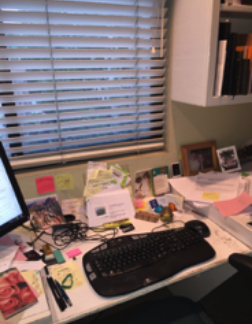 My office clearly says to me, “A writer writes here.” The space is good sized, about 10’x12’, with desk and bookcases along three walls. I like the clear space in the middle. Usually, it’s cluttered with papers, because I spread writing projects on the floor. Sometimes I’m working on two or three projects at one time. It gets pretty messy, but I don’t see the papers as clutter. I think it’s an efficient way to put the pieces together and make sure I don’t forget anything. My office clearly says to me, “A writer writes here.” The space is good sized, about 10’x12’, with desk and bookcases along three walls. I like the clear space in the middle. Usually, it’s cluttered with papers, because I spread writing projects on the floor. Sometimes I’m working on two or three projects at one time. It gets pretty messy, but I don’t see the papers as clutter. I think it’s an efficient way to put the pieces together and make sure I don’t forget anything.   I also like the window in front of my computer. I can look out and see the trees. I read a study recently which said that people who can see trees from their office windows experience less stress. It works for me! I also like the window in front of my computer. I can look out and see the trees. I read a study recently which said that people who can see trees from their office windows experience less stress. It works for me!
On my desk, I keep a drawing: The high country in Alaska’s Denali National Park, where I hiked a few years ago. The park’s wildness and beauty inspire me.  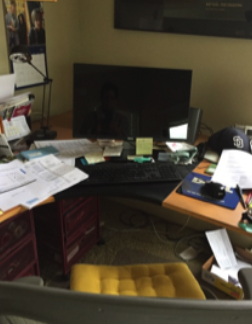 I have a fair amount of space for books. Here’s one partial wall of my office bookcases. I keep research materials for writing projects I’m currently working on here as well as fiction and nonfiction that I want to read next. I have a fair amount of space for books. Here’s one partial wall of my office bookcases. I keep research materials for writing projects I’m currently working on here as well as fiction and nonfiction that I want to read next.
My husband established his office upstairs in the loft. He’s made it into a pleasant space. Sometimes, I use his office, for example, when I need better resolution on a photograph (he has better software than I do), or when my computer is down, or when I want to order a book on Amazon (our Amazon Prime account is in his name). 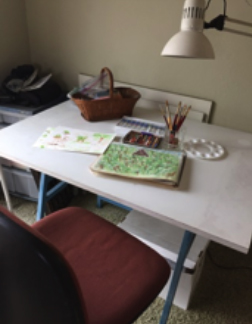 The loft isn’t all his, though. I keep a drawing table there with my drawing and painting supplies ready to use. Sometimes I fool around with pastels or watercolors to get ideas when I’m stuck. The loft isn’t all his, though. I keep a drawing table there with my drawing and painting supplies ready to use. Sometimes I fool around with pastels or watercolors to get ideas when I’m stuck.
I like a lot of things about my office. First, it has a door. I usually keep the door open, but if I really need to concentrate or make sure I’m not disturbed, I close the door. Second, it’s mine. I can put things where I like. No one will disturb the order—or disorder. And finally—and maybe this is more important than anything else—my office means work to me. Work can be something I have to produce for someone else. Or it can mean creative work. In any case, my imagination is free to roam in my room of my own. Writing Group: 5 Reasons to Join Appeared in the blog WOW! Women on Writing “If you ask me what I came to this world to do as an artist, I would tell you, as an artist, I came to live out loud.” - Emile Zola, quoted by the actress Viola Davis at the 2017 Golden Globe Awards To live out loud. That’s why I joined a writing group. I was filling pages of journals with my wanderings. A flyer came in the mail. It announced a writing group starting in a writer’s home forty miles away from mine—that’s forty freeway miles on Tuesday mornings in Los Angeles rush hour traffic. I went once and never left. What do I have to show for it? Two published award-winning novels, several award-winning short stories, and lots of pages filled with memories, travel, family, aspirations, disappointments…a full life on paper. A life and an imagination lived out loud. If you are looking for a writing group, here are some things to consider. 1—You are taken seriously as a writer once a week. My family sees me as wife, mom, sister…the list goes on. My writing group sees me, first and foremost, as a writer. If I record my challenges on paper—in journal, memoir or fiction form—my struggles are taken seriously too. I am assured of a fair hearing based on my skills as a writer. 2—You learn what works and what doesn’t. I may think I’ve written the great American paragraph. My writing group may agree—or not. Whatever their verdict, I use their critique to make myself a better writer. 3—You may get valuable advice on publishing. To be honest, my writing group focuses on getting better at the craft of writing rather than on publishing. But members always are willing—and able—to help me on my path toward putting my work out into the world. I’ve received aid on every aspect of publishing, from drafting a query letter to getting an agent, to the pros and cons of self-publishing. In a group of writers, someone is bound to have the answer. 4—You get critique and support. Face it. You have to be willing to listen to some criticism if you want to grow as a writer. Your writing group will give you honest feedback, positive as well as negative. Because the feedback is given in an atmosphere of trust, critique is easier to accept. And then, you can choose to take their suggestions or not. You are in charge. 5—You have unlimited time to learn. When you sign up for a class, you have a semester. When the class ends, you decide ‘Do I sign up again?’ Will I learn something new a second time around? A writing group continues for as long as the leader wants to lead. People join or drop out, exposing you to diverse points of view. You learn and keep learning. My writing group has given me the opportunity to live out loud. My wish is that you’ll find a group that lets you live out loud too. If you would like Barbara Crane to write a guest post for your blog, please contact her at barbara@whenwaterwaseverywhere.com |
For more information, please contact me: barbara@WhenWaterWasEverywhere.com. ![]()
![]()
![]()
![]()
© 2016 Barbara Crane. All rights reserved
